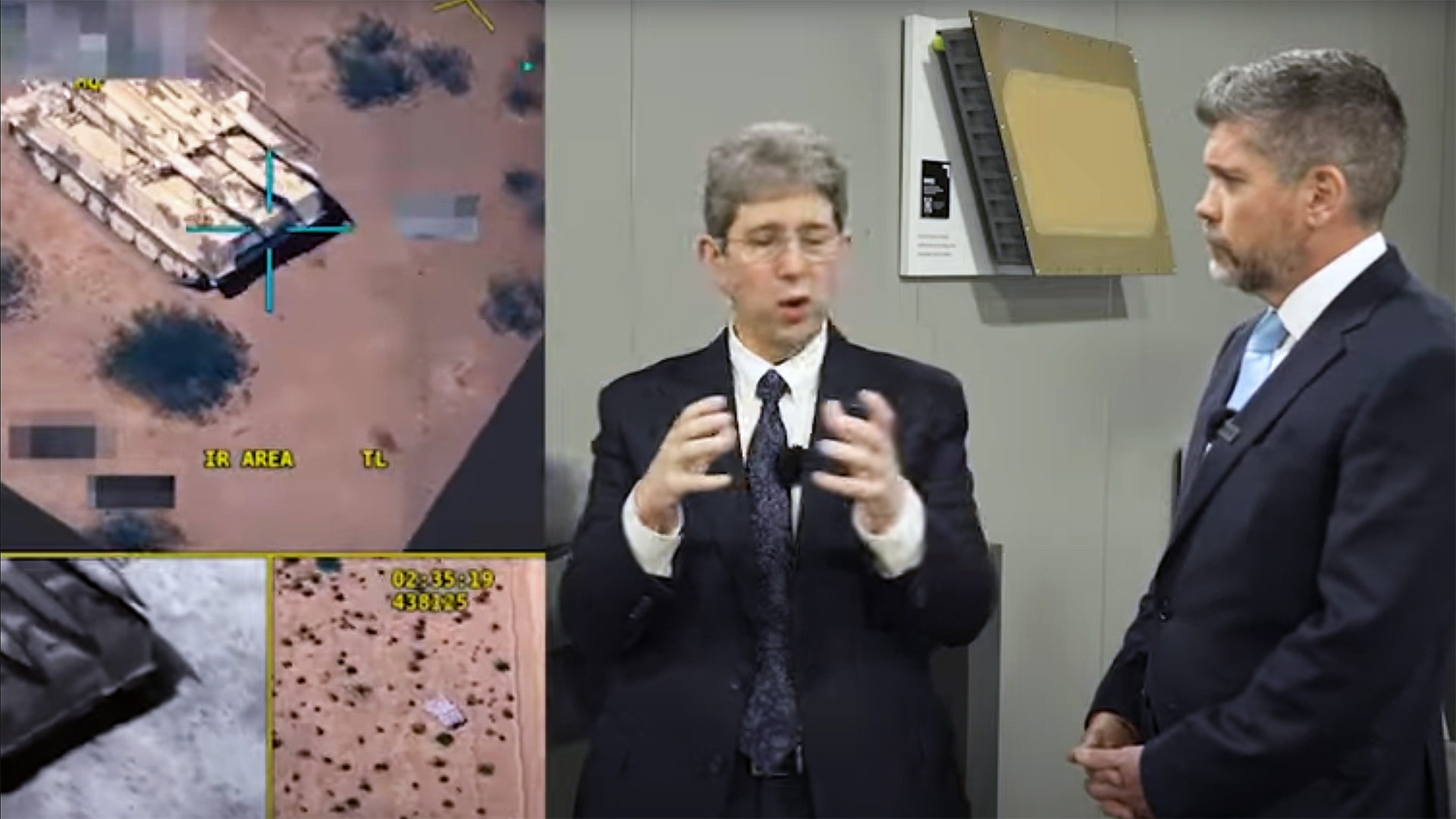The LITENING targeting pod has been hanging off American fighters and other aircraft for over two decades and has seen incremental improvements over that time to evolve well beyond what its original capabilities were. Now that is being taken a big step further with the LITENING Large Aperture upgrade for the pod.
Our Jamie Hunter talked with Northrop Grumman’s Jim Conroy about this new upgrade to the popular sensor system on the floor of the Air & Space Forces Association’s Warfare Symposium in Denver, Colorado. They also talked a bit about the F-16s new electronic warfare system. Check it out below!

The new configuration features improved high-resolution optics with short, medium, and long wavelength infrared and color TV capabilities, combined with “datalink capability and advanced algorithms to detect, identify and engage targets from long ranges,” according to a company press release. “A more powerful mission processor accelerates imaging functions and allows for future capabilities, including artificial intelligence and machine learning,”

Other enhancements include faster video processing, improved stabilization, more refined control functions, and “continuous roll for uninterrupted imaging during maneuvers.”
Due to miniaturization of the tech that’s packed inside the LITENING’s cylindrical form factor, extra space has been freed-up accommodate extra payloads, like a small radar, electronic intelligence suite, or an additional data-link as required.

What’s key about this new LITENING variant is that it can be delivered new or its features can be backfired to existing pods.
While air-to-ground missions are what these pods were primarily designed for, and that still is their central capability set, they now have a major air-to-air role. They work to detect and positively identify aircraft at great distances, even in the black of night. The targeting pod’s optics can be slaved to the jet’s radar, and vice-versa. So, any upgrade to a radar that can sense further and more clearly would be hamstrung without a EO/IR sensor that can do the same.
Such an upgrade is especially logical for some of the USAF’s F-16s that are getting the new AN/APG-83 AESA radar and currently use the LITENING pod. Other aircraft tactical jets that use LITENING, like the USMC’s remaining Hornets and Harriers, could also make great use of the LITENING LA.
When it comes to the core mission of air-to-ground, the clearer a pilot or weapons systems officer can see a target and the farther away they can do so, the better. You can imagine how important this would be for a LITENING-equipped high-flying B-52 crew executing a close air support mission.
Improved tracking of moving targets, more sensor mode options, and any sort of AI assistance in carrying out the mission will only make ordnance delivery and non-traditional reconnaissance duties all that much easier and effective.
And of course, while antithetical to stealth, the nice thing about a targeting pod is that you can just unbolt it when it’s not needed or needs service and upgrade it when the opportunity is right without having to gut the aircraft and adapt its computer processing systems in the process.
The primary competitor of the LITENING pod is Lockheed’s Sniper pod. They have similar capabilities but also their own unique set of advantages.
Regardless, with 4th generation fighters remaining a big part of the USAF’s force structure for decades to come, as well as the B-52 and other aircraft that use the LITENING and Sniper, watching how these pods continue to evolve will be very interesting.
Contact the editor: Tyler@thedrive.com
